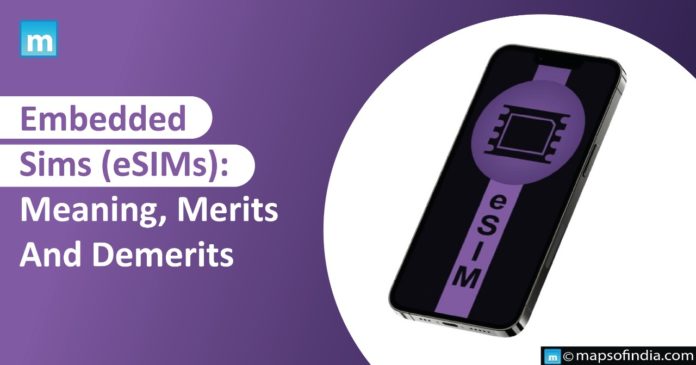The eSIM, commonly called an embedded SIM, isn’t a new technological breakthrough. However, it is quickly gaining popularity because of fitness-focused gadgets and devices like Apple iPhones, Samsung Galaxy series, and Google Pixel series, especially the iPhone 14, which only supports eSIMs in the US.
eSIM: What is it?
If the term doesn’t already make it apparent, an eSIM, or embedded SIM, is essentially the same hardware as a conventional SIM card chip. Still, it is now a permanently included part of the circuit panel of a smartwatch or handset.
An eSIM is composed of a few components previously independent of your phone’s internal operations, much like a standard SIM card. Additionally, they perform the same function as a unique identifier that enables phone companies and other users to locate your smartphone when they contact or message you.
However, since the motherboard is attached, reprogramming is also possible, allowing users to transfer providers without having to replace any physical SIM cards. Even though they were first released in 2012, eSIMs have not yet wholly replaced normal SIMs, despite the possibility of future use cases. This is because eSIMs have some disadvantages in contrast to their advantages. Here is a more detailed look at each.
Merits of Embedded SIMs
Convenience: Flexibility is the main advantage. If you don’t frequently change SIM cards or phones, switching to eSIMs would only be required once. It will also save you from visiting a telecom retailer or service facility when you relocate to another state or country and might want to switch to a new provider. Having multiple SIM profiles stored in your eSIM allows you to switch between them without switching devices or repeatedly enabling a SIM.
Safety: If you misplace a smartphone with a physical SIM card, you may still be able to prevent attackers from using it thanks to features like locked screens, biometric verification, and remote lockout. They can still take out your SIM card and put it in an alternative, unlocked phone, which gives them the ability to place calls, send texts, or, perhaps worse, use your cell number to get into your financial or social media accounts. This process is quicker and easier for attackers than you may think. An eSIM prevents this from happening because there isn’t a physical component that needs to be taken out and inserted into another device.
One less access point on your phone’s frame: Theoretically, having an eSIM also means one fewer access point on the phone’s body, which should reduce the likelihood that pollutants like dust and water would enter the device through an additional slot. Additionally, it should free up a small room inside the phone that could be used for other things, as standard nano-SIMs of today are already relatively small. This advantage will likely be a little small, though.
Demerits of Embedded Sims
Emergencies: When your phone malfunctions, runs out of energy, or falls and fractures its screen, communication is cut off with eSIMs. While this happens, standard SIM cards may be readily taken out of the damaged phone and inserted into a secondary device or a different phone.
Unusable in nations without eSIM support: In a country where the telecom companies have not yet embraced the technology, you cannot use an eSIM phone. This isn’t an issue if your phone works with both eSIM and regular SIM cards, but it occurs with devices like the iPhone 14 US model, which only works with eSIM.





